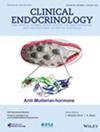This study aimed to investigate the quality of life of patients with central precocious puberty (CPP) who required treatment and premature thelarche (PT) followed up without treatment and to compare the groups with and without treatment among themselves and with healthy children.
This study is designed as a case–control study. A total of 193 children including 59 children with CPP, 53 children with PT, 81 healthy children and their parents were included in the study. A questionnaire was applied to evaluate the sociodemographic characteristics that would affect the quality of life. The ‘Pediatric Quality of Life Inventory (PedsQL)’ was used to assess the quality of life.
The PedsQL total scale score was 78.10 ± 17.13, 79.35 ± 11.54 and 79.52 ± 14.65, the psychosocial health summary score was 78.86 ± 16.83, 79.40 ± 12.54 and 79.94 ± 14.94 and physical health summary score was 75.81 ± 20.69, 79.41 ± 15.04 and 78.25 ± 17.52 in CPP, PT and control groups, respectively; however, there was no statistical difference (p > .05). In the scale administered to the parents, scores were similar in the three groups. No difference was found between CPP, PT and control groups in terms of sociodemographic data in the study (p > .05).
Unlike previous studies, in this study the effects of sociodemographic characteristics and whether treatment was initiated or not on quality of life were investigated. Although the scale scores of the CPP group were lower than the PT and control group, there was no statistically significant difference, indicating that quality of life was not negatively affected in the CPP group receiving treatment.


